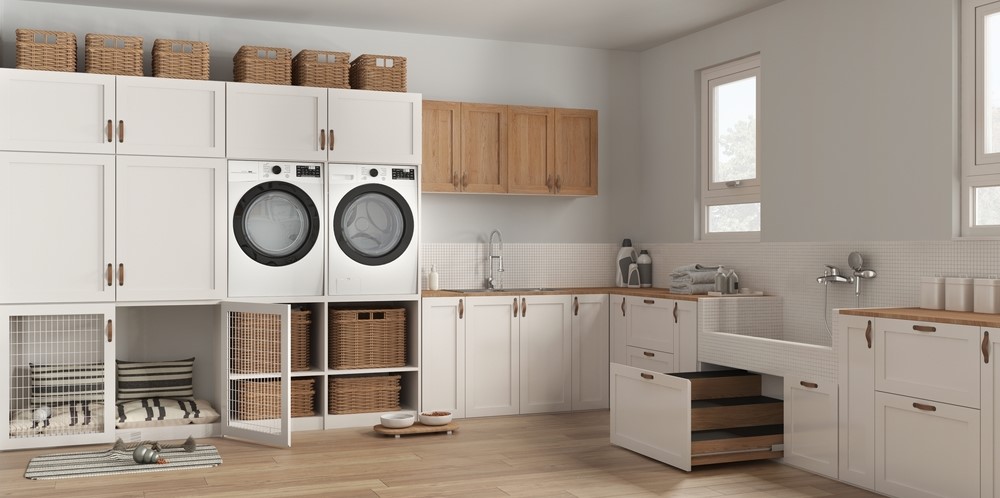
How to Increase Your Home’s Value with a Finished Basement
A finished basement is a valuable addition to any home, offering increased living space, improved functionality, and a boost to your property’s market value. Converting an unfinished basement into a usable area can provide a high return on investment (ROI) while enhancing your home’s appeal to potential buyers. Here, we explore the steps, benefits, and considerations involved in finishing a basement to maximize your home’s value.
1. Planning and Design
Before embarking on a project of basement finishing in St. Louis, it’s crucial to plan and design the space effectively. Consider the following:
- Assess Your Needs: Identify how you intend to use the finished basement while you start on basement finishing in St. Louis. Common uses include a family room, home office, gym, guest bedroom, or entertainment area. Defining the purpose will guide your design and layout decisions.
- Budgeting: Establish a realistic budget. Costs can vary significantly based on the size of the basement, the complexity of the design, and the materials used. Ensure you allocate funds for unexpected expenses.
- Permits and Codes: Check local building codes and obtain necessary permits. Compliance with regulations ensures safety and legality, which is essential for future resale.
- Layout and Functionality: Plan the layout to maximize functionality and flow for basement finishing in St. Louis. Consider incorporating storage solutions, adequate lighting, and proper ventilation. An open-concept design can make the space feel larger and more inviting.
2. Addressing Potential Issues
Unfinished basements often come with challenges such as moisture, poor insulation, and limited natural light. Address these issues early in the basement renovation process to prevent future problems.
- Moisture Control: Install a sump pump, waterproofing membranes, and proper drainage systems to prevent water damage. Seal foundation cracks and ensure gutters and downspouts direct water away from the house.
- Insulation: Proper insulation is essential for maintaining a comfortable temperature and reducing energy costs. Use foam board or spray foam insulation for walls, and consider insulating the floor and ceiling.
- Lighting: Basements typically lack natural light. Incorporate recessed lighting, wall sconces, and floor lamps to brighten the space. Consider adding egress windows for both light and safety while you do basement finishing in St. Louis.
3. Flooring and Walls
Choosing the right flooring and wall treatments during basement renovation can significantly impact the basement’s aesthetic and functionality.
- Flooring: Select durable, moisture-resistant flooring options. Popular choices include vinyl planks, ceramic tiles, and engineered hardwood. If you prefer carpet for added warmth, opt for moisture-resistant padding and low-pile carpet.
- Walls: Drywall is a common choice for finished basements, providing a clean and polished look. Consider adding wainscoting or beadboard for added texture and interest. Paint the walls in light, neutral colors to make the space feel larger and more open.
4. Adding Essential Features
To enhance the functionality and appeal of your finished basement, consider incorporating the following features:
- Bathroom: Adding a bathroom increases convenience and boosts your home’s value. Even a small half-bath can make a significant difference. So I must follow this while doing basement finishing in St. Louis.
- Kitchenette or Wet Bar: A kitchenette or wet bar can transform your basement into an entertainment hub. Include a mini-fridge, sink, and storage for a functional and stylish addition.
- Storage Solutions: Maximize storage with built-in shelving, closets, and cabinets. Clever storage solutions keep the space organized and clutter-free.
- Home Office: With the rise of remote work, a dedicated home office is a valuable addition. Ensure the space is well-lit and ergonomically designed for productivity.
5. Finishing Touches and Decor
The final touches can elevate your finished basement from functional to fabulous.
- Furniture: Choose comfortable and practical furniture that suits the room’s purpose. For a family room, opt for cozy sofas and a media center. For a guest bedroom, include a comfortable bed and bedside tables.
- Decor: Personalize the space with artwork, rugs, and decorative accessories during basement finishing in St. Louis. Plants can add a touch of greenery and life to the basement.
- Technology: Incorporate smart home technology, such as programmable lighting, sound systems, and climate control for added convenience and modern appeal.
6. Hiring Professionals vs. DIY
Decide whether to hire professionals or take a DIY approach based on your skills, time, and budget.
- Hiring Professionals: Hiring contractors ensures quality workmanship and adherence to building codes. They can handle complex tasks like electrical work, plumbing, and structural changes.
- DIY: If you have the skills and time, a DIY approach can save money. Focus on tasks you are confident in, such as painting or installing flooring, and leave more complex jobs to the professionals.
7. Benefits of a Finished Basement
Finishing your basement offers numerous benefits that enhance your home’s value and your quality of life.
- Increased Living Space: A finished basement provides additional square footage, making your home feel larger and more accommodating.
- Higher Property Value: Homes with finished basements typically have higher market values. Potential buyers appreciate the added space and functionality.
- Versatility: A finished basement can serve multiple purposes, from a guest suite to a home theater, offering flexibility for changing needs.
- Energy Efficiency: Proper insulation and sealing can improve your home’s energy efficiency, reducing heating and cooling costs.
8. Considerations for ROI
Maximizing your return on investment requires careful consideration of your basement finishing choices.
- Quality of Work: High-quality materials and workmanship ensure longevity and appeal, making your investment worthwhile.
- Market Trends: Consider local market trends and buyer preferences. Features like additional bathrooms, home offices, and entertainment spaces are currently in high demand.
- Cost vs. Value: Aim for a balance between cost and value. While high-end finishes are appealing, they should align with the overall value of your home to avoid over-improvement.
Conclusion
A finished basement is a strategic investment that enhances your home’s value, functionality, and appeal. By carefully planning the design, addressing potential issues, and incorporating essential features, you can transform an underutilized space into a valuable asset. Whether you hire professionals or take a DIY approach, the key is to ensure quality workmanship and thoughtful design to maximize your return on investment. With the right approach, your finished basement can become a favorite part of your home, offering comfort, style, and increased market value.
FAQs
How much does it cost to finish a basement?
The cost of finishing a basement varies based on the size, design complexity, and materials used. On average, it ranges from $20,000 to $50,000, but high-end finishes can increase the cost.
Do I need a permit to finish my basement?
Yes, finishing a basement typically requires permits to ensure compliance with local building codes. It’s essential to check with your local building authority before starting the project.
What is the ROI for a finished basement?
The return on investment for a finished basement can be substantial, often ranging from 70% to 75%. The exact ROI depends on the quality of the work, local market conditions, and the added features.
